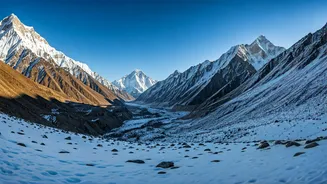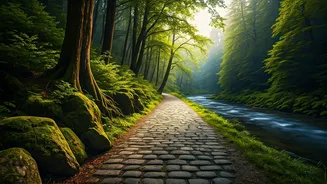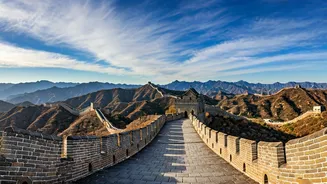Varanasi's Historical Tapestry
Varanasi, one of the world's oldest continuously inhabited cities, boasts a history stretching back millennia. The city has witnessed the rise and fall
of empires, serving as a pivotal center for religion, philosophy, and the arts. Its strategic location on the banks of the sacred Ganges River has further solidified its importance, attracting pilgrims, scholars, and traders for centuries. Historical accounts reveal Varanasi's prominence during the Vedic period, with its mention in ancient Hindu scriptures like the Rigveda. The city's association with Lord Shiva, one of the principal deities in Hinduism, has also made it a significant pilgrimage site. Throughout its history, Varanasi has been ruled by various dynasties, including the Mauryas, Guptas, and Mughals, each leaving their mark on the city's cultural landscape. The architecture of Varanasi reflects this rich heritage, showcasing a blend of architectural styles from different eras. The ghats, or steps leading to the river, are a distinctive feature of the city, each with its own story to tell, and serve as a testament to Varanasi's enduring connection with the river and its spiritual traditions. The city's enduring appeal lies in its ability to preserve its ancient traditions while adapting to the changes of the modern world, making it a unique and captivating destination.
Ghats: A Spiritual Heart
The ghats of Varanasi are not merely steps leading to the Ganges; they are the spiritual heart of the city, a place where life and death converge. Each ghat has its unique significance and history, offering a glimpse into the city's diverse cultural and religious practices. The most famous ghats, such as Dashashwamedh Ghat and Manikarnika Ghat, are centers of daily rituals, ceremonies, and cremations. Pilgrims come from all over India and the world to bathe in the holy waters, believing it cleanses them of their sins. The aarti ceremony, a ritual of offering light to the river, takes place every evening and is a mesmerizing spectacle of chanting, music, and fire. Manikarnika Ghat is the primary cremation ground, where the cycle of life and death is openly observed. This ghat is considered to be one of the holiest places for Hindus, where the dead are cremated, allowing their souls to achieve Moksha (liberation). The vibrant energy of the ghats is palpable, a blend of solemnity, celebration, and devotion. As you walk along these steps, you'll witness the profound faith and traditions that shape the daily lives of Varanasi's residents. The ghats offer a window into the core of Hinduism, providing a deep understanding of its rituals and spiritual values. Every sunrise and sunset, the ghats reflect the profound spiritual atmosphere of the city, and offer a unique experience for those seeking a deeper connection with themselves and their faith.
Varanasi's Cultural Melting Pot
Varanasi is a vibrant melting pot of cultures, where ancient traditions blend seamlessly with modern influences. The city is a hub for various art forms, including classical music, dance, and weaving. The Banarasi silk sarees, renowned for their intricate designs and craftsmanship, are a testament to the city's rich textile heritage. Varanasi also has a thriving culinary scene, with street food vendors offering delicious snacks and traditional dishes like lassi and paan. The city's diverse population reflects its long history as a center for religious and cultural exchange. You'll encounter people from different backgrounds, religions, and regions, each contributing to the city's unique charm. The presence of numerous temples, mosques, and other religious sites showcases its spirit of inclusivity and tolerance. Festivals and celebrations are integral to Varanasi's cultural life, with events like the Ganga Mahotsav and Dev Deepavali attracting visitors from far and wide. The city's vibrant atmosphere is a constant reminder of its ability to embrace tradition while welcoming new ideas and influences. This cultural richness is not merely a display of heritage; it's a living, breathing part of the daily life for Varanasi's people. Exploring its bustling streets, experiencing its various arts, and tasting its local cuisine allows a real immersion into its unique atmosphere.
Experiencing Modern Varanasi
While Varanasi is steeped in history and tradition, it's also a city that embraces the modern world. The city has seen significant developments in recent years, including improvements to infrastructure, tourism facilities, and communication networks. There are now modern hotels, restaurants, and cafes to cater to the needs of travelers. The government has also initiated projects aimed at preserving the city's heritage while improving its overall quality of life. The city's digital landscape is evolving rapidly, with increased access to internet and social media. However, these changes do not overshadow the city’s rich history; they exist alongside it. Despite the influx of modern amenities, Varanasi continues to retain its spiritual essence and cultural identity. Visitors can experience the city's contemporary side while still immersing themselves in its traditional charm. Whether you choose to take a boat ride on the Ganges, stroll through the bustling market streets, or visit one of the many museums and galleries, Varanasi offers a diverse range of experiences. As Varanasi moves forward, it's evident that it's committed to preserving its heritage while embracing modern advancements. This harmonious blend of old and new makes it a unique and captivating destination, creating an immersive experience for those who visit.













